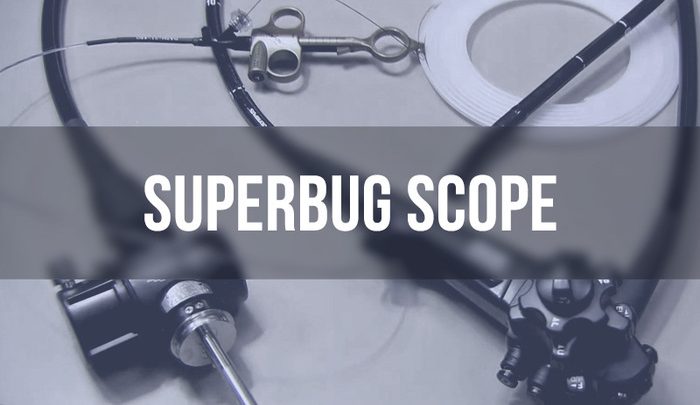Olympus Superbug Scope Potentially Infects Hundreds, Kills Two
Editors carefully fact-check all Drugwatch.com content for accuracy and quality.
Drugwatch.com has a stringent fact-checking process. It starts with our strict sourcing guidelines.
We only gather information from credible sources. This includes peer-reviewed medical journals, reputable media outlets, government reports, court records and interviews with qualified experts.

The company that manufactured the endoscope linked to UCLA’s deadly superbug infections never obtained approval from the Food and Drug Administration (FDA) for the device, an agency official told CNN. Doctors use these scopes in more than 500,000 procedures annually, and a patient infected by the superbug scope is now suing the device maker.
The scope in question, Olympus’ TJF-Q180V duodenoscope, is used routinely in a procedure called endoscopic retrograde cholangiopancreatography (ERCP) to diagnose or treat diseases of the liver, bile ducts and the pancreas, including types of cancer. Doctors insert the flexible snake-like device into the body through the throat or anus.
The scope made national news in February when it was implicated in the death of two patients and the possible infection of nearly two hundred others. The scope arrived on the market in 2010, and stayed on the market for more than four years before the FDA realized the device was never cleared.
Olympus now has a 510(k) application for approval pending with the agency.
“Why didn’t we notice it? I don’t know,” Karen Riley, deputy director of strategy for the FDA’s Office of External Affairs told CNN. The agency acknowledged that it knew about several cases of patients infected by the superbug, carbapenem-resistant Enterobacteriaceae (CRE), but didn’t take any action.
It wasn’t until the deadly outbreak at UCLA that the FDA issued a warning.
The scopes contain many grooves, nooks and crannies that may be difficult to clean, and this raises the risk of bacteria being transferred from patient to patient. “If this can happen at UCLA this can happen everywhere,” infection control expert Marc-Oliver Wright told NBC News.
Despite the outbreak and deaths, the FDA told MedPage Today that it has no plans to take action against Olympus.
Infected Teen Sues Olympus
While the FDA doesn’t plan on pursuing action against the scope maker, patients may take matters into their own hands.
An 18-year-old patient and his family sued Olympus after he suffered a CRE infection linked to the scope at UCLA. At the end of February, Aaron Young filed a lawsuit accusing Olympus of negligence for selling a device prone to spreading bacteria. Young had two endoscopic procedures with the contaminated scope and is currently hospitalized for treatment.
Young has a 50 percent chance of survival because CRE is highly resistant to antibiotics. His attorney told the Times he expects more lawsuits.
The infections are not limited to UCLA patients. In March, Cedars-Sinai Medical Center, also in Los Angeles, and Hartford Hospital in Connecticut reported several cases of superbug infection linked to the same scope. Medical experts wonder if more cases will surface.
“It’s highly likely many hospitals around the country have had outbreaks, and they haven’t been able to connect the dots until this problem was disclosed at UCLA,” said Lisa McGiffert, director of the Safe Patient Project at Consumers Union told The Los Angeles Times. “It’s just a little late — especially for those who got infections and maybe died as a consequence.”
Problematic Design
Some experts say the problems with the Olympus scope go beyond lacking FDA approval.
“The public should understand that the standards for clearing such devices for marketing are too weak,” Dr. Michael Carome, Director of the Health Research Group at Public Citizen told Drugwatch in an email. “We likely would still be facing the same public health threat caused by these devices even if the company has sought FDA clearance.”
Young’s lawsuit said Olympus redesigned its scope last year and failed to provide new instructions on cleaning the updated model and never obtained FDA approval, the Times reported. It also said Olympus knew that its design made it difficult to clean.
Meanwhile, Japan-based Olympus told the Times that it is monitoring patients and providing additional educational materials on how to clean the scope.
“The Olympus TJF-Q180V requires careful attention to cleaning and reprocessing steps, including meticulous manual cleaning,” the company said in a statement.
The scopes have tiny crevices near the camera at the tip of the device that can harbor microorganisms, and the FDA warned that following the manufacturer’s instructions for cleaning does not ensure that bacteria will not be passed from patient to patient.